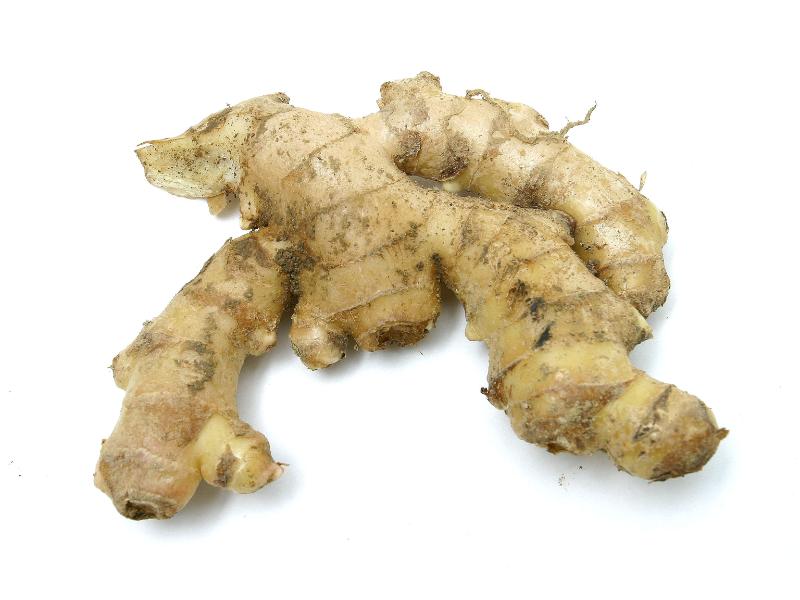Search in medicinals
Zingiberis Rhizoma Recens
Fresh ginger
生姜 〔生薑〕 shēng jiāng

Alternate English names: fresh gingerroot
Kingdom: Plant
Origin in PRC Pharmacopoeia: Zingiber officinale (Wild.) Rosc. (PRC Pharmacopoeia)
Origin in unofficial sources: Zingiber officinale (Willd.) Rosc.
Use: Medicinal and alimentary
Category: Exterior-resolving agents / Warm acrid exterior-resolving agents
Properties: Acrid; warm.
Channel entry: Lung, spleen, and stomach channels.
Actions and indications:
- Promotes sweating and resolves the exterior: Common cold due to external contraction of wind-cold.
- Warms the center and checks vomiting: Stomach cold vomiting.
- Warms the lung and relieves cough: Wind-cold cough.
- Other actions: Shēng jiāng resolves the toxin of Bàn xià (半夏 Pinelliae Rhizoma, pinellia [rhizome]) and Tiān nán xīng (天南星 Arisaematis Rhizoma, arisaema [root]), as well as that of contaminated fish and crabs.
Dosage and method: Oral: 3–10g in decoctions. Alternatively, use the juice extracted by crushing.
Warnings: Shēng jiāng can damage yīn and foster fire; it is therefore contraindicated in yīn vacuity with internal heat.
Notes: The dried form of ginger, gān jiāng (Zingiberis Rhizoma), has different properties.
Product description: The fresh rhizome is a long, knobby, slightly flat rhizome with finger-like branches, that have depressed scars at the ends, where shoots have been removed. It is 4–10 cm long, and about 1–2 cm thick. The exterior surface is a grayish brown, with distinct annular nodes. It breaks easily, revealing a pale yellow or brown fracture that is granular and fibrous in texture. It is cut into slices 1–2 mm thick after the skin is removed.
Quality: Large fat roots that are tender and juicy are the best.
Production area: Widely cultivated in and outside China, the main production areas in China being Sìchuān, Húběi, and Guǎngdōng.
See: Gān jiāng (干姜 Zingiberis Rhizoma, dried ginger)
Back to search result Previous Next